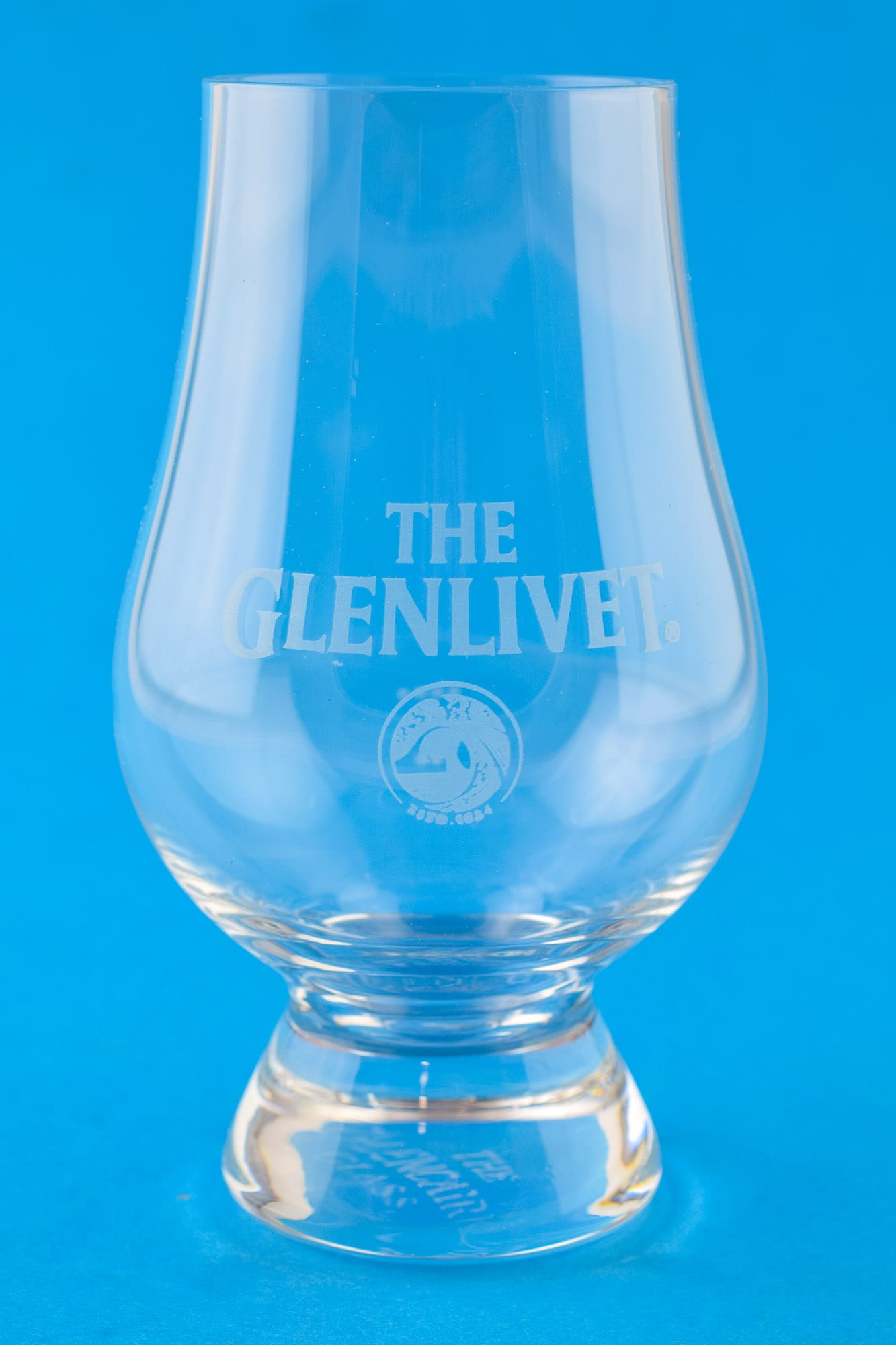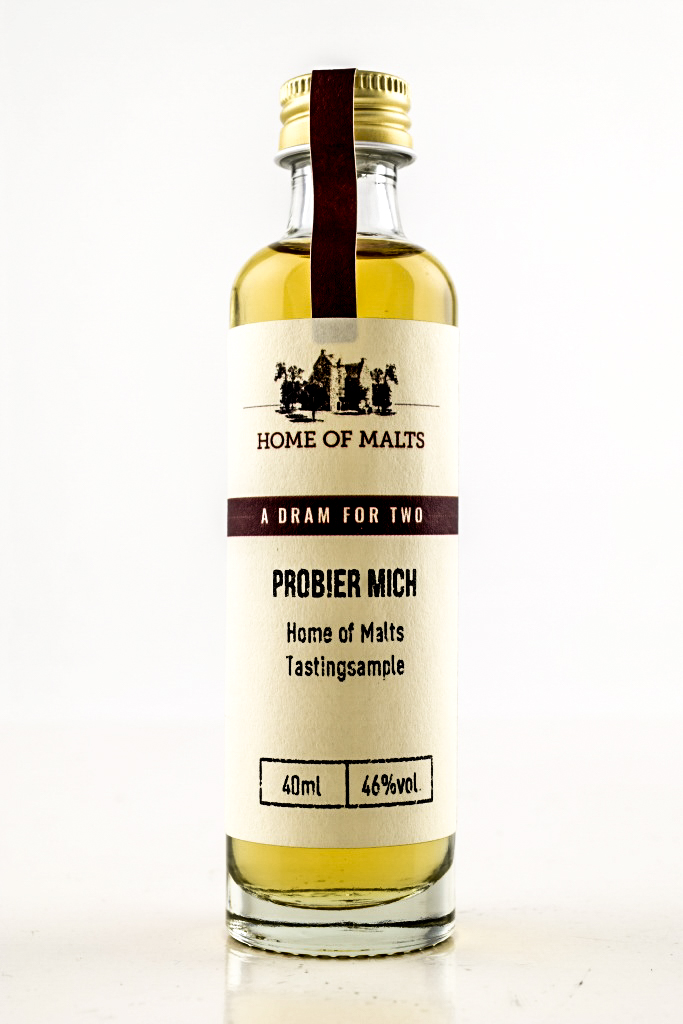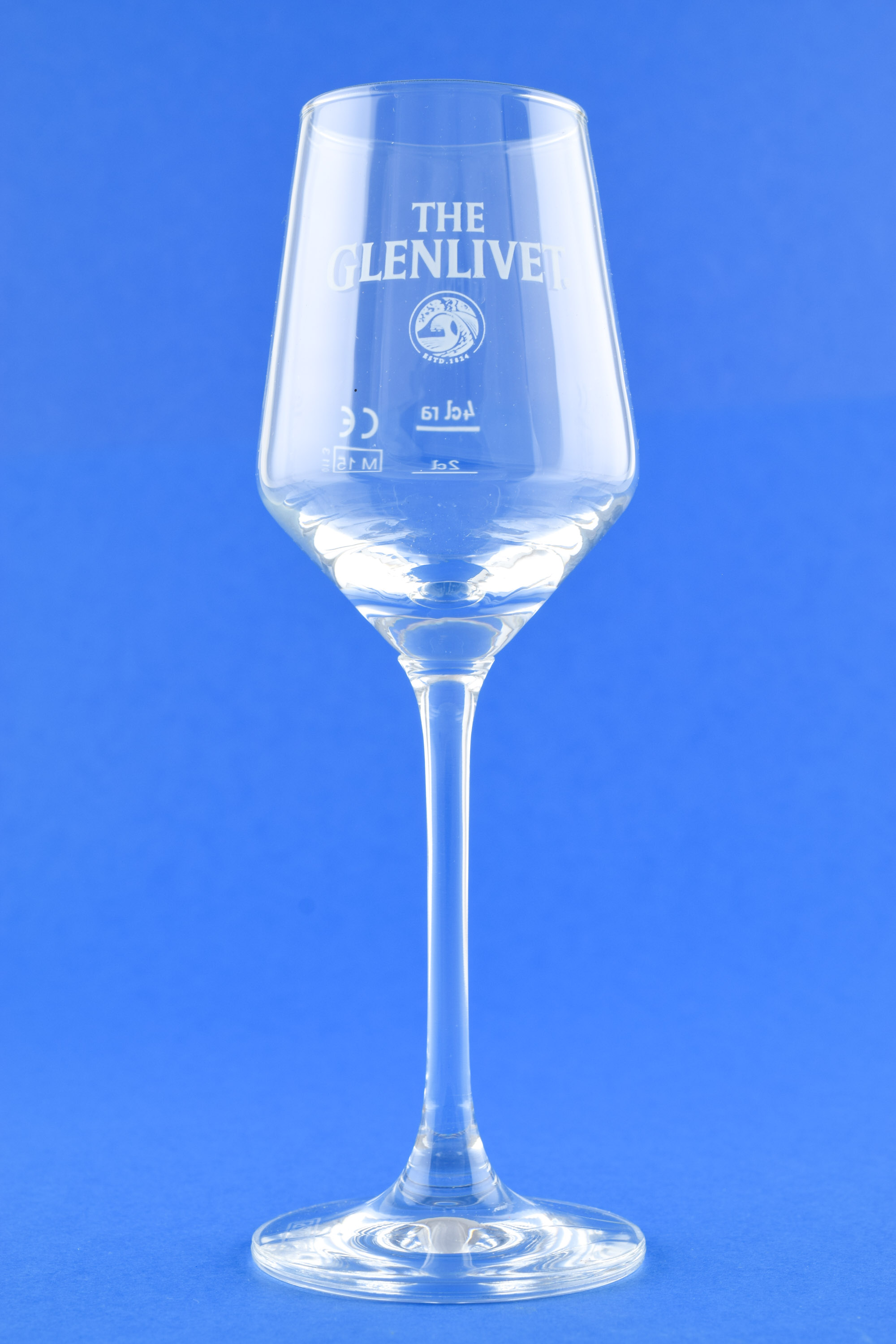- Scotch Whisky
-
Whisky
- Types of Whisky
- Whisky MIniatures & Samples
- Accessories
-
Distilleries / Brands
- Amrut
- Bushmills
- Connemara
- Jameson
- Johnnie Walker
- Jack Daniels
- Jim Beam
- Kavalan
- Nikka Whisky
- Paul John
- Redbreast
- Starward
- Suntory Whisky
- West Cork
- Waterford
-
All Distilleries / Brands
- Aberfeldy
- Aberlour
- Abhainn Dearg
- Aerstone
- Ailsa Bay
- Allt-à-Bhainne
- Amrut
- anCnoc
- Annandale
- Arbikie
- Ardbeg
- Ardmore
- Ardnahoe
- Ardnamurchan
- Armorik
- Arran
- Auchentoshan
- Auchroisk
- Aultmore
- Bain's
- Bakery Hill
- Balblair
- Ballantine's
- Ballechin
- Balmenach
- Balvenie
- Banff
- Basil Hayden's
- Ben Nevis
- Benriach
- Benrinnes
- Benromach
- Big Peat
- Bimber
- Black Bottle
- Black Rock
- Bladnoch
- Blair Athol
- Blanton's
- Booker's
- Bowmore
- Braeval
- Brora
- Bruichladdich
- Buffalo Trace
- Bulleit
- Bunnahabhain
- Bushmills
- Caledonian
- Cambus
- Cameronbridge
- Caol Ila
- Caperdonich
- Cardhu
- Carsebridge
- Chichibu
- Chivas Regal
- Clydeside
- Clynelish
- Coleburn
- Compass Box
- Connemara
- Convalmore
- Cooley
- Corsair Artisan
- Cotswolds
- Cragganmore
- Craigduff
- Craigellachie
- Crown Royal
- Cutty Sark
- Dad's Hat
- Daftmill
- Dailuaine
- Dallas Dhu
- Dalmore
- Dalwhinnie
- J.W. Dant
- Deanston
- Dewar's
- Dingle
- Drambuie
- Dry Fly Distilling
- Dublin Liberties
- Dufftown
- Dumbarton
- Eden Mill
- Edradour
- Eimverk
- Elijah Craig
- Elsburn
- Famous Grouse
- Fettercairn
- FEW Spirits
- Finlaggan
- Floki
- Four Roses
- Frysk Hynder
- George Dickel
- Ginkgo
- Girvan
- Glann Ar Mor
- Glasgow
- Glen Albyn
- Glen Elgin
- Glen Garioch
- Glen Grant
- Glen Keith
- Glen Mhor
- Glen Moray
- Glen Ord
- Glen Scotia
- Glen Spey
- Glenallachie
- Glenburghie
- Glencadam
- Glendalough
- Glendronach
- Glendullan
- Glenesk
- Glenfarclas
- Glenfiddich
- Glenglassaugh
- Glengoyne
- Glengyle
- Glenkinchie
- Glenlivet
- Glenlossie
- Glenmorangie
- Glenrothes
- Glentauchers
- Glentauchers
- Glenturret
- Glenugie
- Glenwyvis
- Grant's
- Green Spot
- Hakushu
- Hanyu
- Harris
- Hazelburn
- Heaven Hill
- Hibiki
- Highland Park
- Holyrood
- Hyde
- Ileach
- Imperial
- Inchgower
- Inchmurrin
- Invergordon
- Inverleven
- Jack Daniel's
- Jameson
- Jim Beam
- Johnnie Walker
- Jura
- Karuizawa
- Kavalan
- Kilbeggan
- Kilchoman
- Kilkerran
- Kingsbarns
- Kininvie
- Knob Creek
- Knockando
- Knockdhu
- Koval
- Kyrö
- Ladyburn
- Lagavulin
- Lagg
- Lantenhammer
- Laphroaig
- Lark
- Ledaig
- Lindores Abbey
- Linkwood
- Linlithgow
- Littlemill
- Loch Lomond
- Lochlea
- Lochside
- Longmorn
- Longrow
- Macallan
- Macduff
- Mackmyra
- MacNair's
- Maker's Mark
- Mannochmore
- Mars
- Michter's
- Midleton
- Milford
- Millburn
- Millstone
- Miltonduff
- Miyagikyo
- Monkey Shoulder
- Mortlach
- Nc'nean
- Nikka Whisky
- North British
- North of Scotland
- North Port
- Oban
- Octomore
- Old Ballantruan
- Old Forester
- Old Grand Dad
- Old Pulteney
- Paul John
- Peat's Beast
- Penderyn
- Pietra & Maleva
- Pittyvaich
- Port Askaig
- Port Charlotte
- Port Dundas
- Port Ellen
- Powers
- Puni
- Raasay
- Rebel Yell
- Redbreast
- Redemption
- Rittenhouse
- Rosebank
- Royal Brackla
- Royal Lochnagar
- Scapa
- Sea Shepherd
- Slyrs
- Smokehead
- Spey
- Speyburn
- Speyside Distillery
- Springbank
- St George's Distillery
- St. Kilian
- St. Magdalene
- Star Hill
- Starward
- Stauning
- Stork Club
- Strathclyde
- Strathisla
- Strathmill
- Sullivans Cove
- Suntory
- Talisker
- Tamdhu
- Tamnavulin
- Teaninich
- The Teeling Whisky Company
- Teerenpeli
- The Epicurean
- The Irishman
- The Quiet Man
- The Singleton
- Tobermory
- Togouchi
- Tomatin
- Tomintoul
- Torabhaig
- Tormore
- Tullamore Dew
- Tullibardine
- Tyrconnell
- Uitvlught
- Warenghem
- Waterford
- West Cork
- Westerhall
- Westward
- WhistlePig
- White Oak
- Wild Turkey
- Willett
- Wolfburn
- Woodford Reserve
- Writers Tears
- Yamazaki
- Yoichi
- Specials
- Countries
- Whisky recommendations
- Rum
- Gin
- Wine
- Spirits & Liqueurs
- New In
- Samples & Miniatures
- Gift ideas
- SALE
Filter products
Glenlivet
The Glenlivet is one of the most popular Scotch brands in the world. With its soft, floral and fruity character, it is a prime example of the classic Speyside whisky. This palate-pleaser easily convinces even newcomers to single malt Scotch. Try the inexpensive and flavourful Glenlivet 18 year old now!

Average rating of 4.3 out of 5 stars
Content: 0.7 Liter (€82.84 / 1 Liter)

Average rating of 3.7 out of 5 stars
Content: 0.7 Liter (€38.56 / 1 Liter)

Average rating of 4.6 out of 5 stars
Content: 0.7 Liter (€51.41 / 1 Liter)

Average rating of 4 out of 5 stars
Content: 0.7 Liter (€54.27 / 1 Liter)

Content: 0.7 Liter (€302.13 / 1 Liter)

Average rating of 5 out of 5 stars

Content: 0.7 Liter (€61.41 / 1 Liter)

Average rating of 4 out of 5 stars
Content: 0.7 Liter (€59.99 / 1 Liter)

Average rating of 3 out of 5 stars
Content: 0.04 Liter (€149.75 / 1 Liter)

Content: 0.7 Liter (€164.99 / 1 Liter)

Content: 0.7 Liter (€85.70 / 1 Liter)

Content: 0.7 Liter (€60.70 / 1 Liter)

Content: 0.05 Liter (€119.80 / 1 Liter)

Content: 0.7 Liter (€899.99 / 1 Liter)
About The Glenlivet - The success story of the alleged Mr Smith
Smugglers, moonshiners and pistols... The story of Glenlivet whisky reads like a good thriller. Glenlivet, sorry THE Glenlivet, is largely responsible for the reputation of Scotland's Speyside region. The fact that excellent single malt whiskies with a floral bouquet, delicious fruity notes and soft character are produced here is said to be the hallmark of Speyside worldwide. In the case of the single malt from The Glenlivet, these descriptions are spot on. For many whisky connoisseurs, especially in the USA, The Glenlivet is the Scotch whisky par excellence. The great success of this historic malt whisky distillery is closely linked to the name George Smith and the Livet Valley, which gives Glenlivet its name.
George Smith was a busy man. He was one of the first, possibly the first, to obtain an official distilling licence. In the Scottish Highlands in the early 19th century, moonshining was a kind of popular sport. Refusing to pay taxes to the English occupiers was part of the Scottish identity. After the Excise Act of 1823, the illegal distilling of Scotch whisky became increasingly risky. Conversely, legal whisky production attracted success and profit. George Smith recognised the signs of the times and from then on opted for the legal route.
With the distilling licence, he initially operated several farm distilleries in the valley of the River Livet. Smith's ancestors had been distilling whisky here illegally since 1774. At this time, the Speyside region in Scotland was an Eldorado for moonshiners and smugglers. Here they could easily hide from the strict eyes of the law. As a result, George Smith made a lot of enemies in the immediate neighbourhood with his legal distilling licence. To protect himself from his rivals, Smith carried two pistols with him from then on. You can still see them in the distillery today.
George Smith is now celebrated as one of the most colourful figures in Scotch whisky history. The Scottish folk musician Robin Laing even dedicated a wonderful song to his story and The Glenlivet: Old Minmore. Very successful indeed, this Mr Smith. Except that he wasn't actually Mr Smith at all. His family actually bore the Scottish name "Gow". As proud Highlanders, these Gows had supported "Bonnie Prince Charlie", Charles Edward Stuart in his fight against the English. As is well known, the uprising ended in a tragic defeat for the Scots. And the Gow family decided to go by the rather innocuous name of Smith in future...
Why "The Glenlivet"?
The Glenlivet distillery as we know it today was established in 1858 on the site of Minmore Farm. The malt whisky produced here quickly became the epitome of fine Speyside malt. At this time, the Glenlivet title was established as a form of regional association with "Glen Livet", the valley of the Livet, which literally means Glenlivet. An impressive example is the neighbouring and sibling distillery Aberlour, which also produces a great Speyside single malt. Macallan, Glenfarclas, Cragganmore, Glen Grant, Mortlach and Benrinnes also used Glenlivet as an epithet for a long time. Even distilleries such as Glen Moray, which are located quite a distance from the Livet Valley, were adorned with the illustrious name.
In 1881, George's son John Gordon Smith, who had taken over the distillery in the meantime, was fed up and went to court. In the tough legal battle, the other distilleries in the region argued that Glenlivet was already a regional and stylistic localisation before George Smith named the distillery, similar to Islay Whisky. Smith saw the frequent use of the Glenlivet term as a free ride on the success of the Glenlivet single malt. Finally, in 1884, an agreement was signed that granted only Glenlivet the title "The Glenlivet". Other distilleries could continue to use the addition -Glenlivet to their distillery name. In 1980 there were still 28 registered distilleries in Scotland using this name, such as Glen Grant-Glenlivet. This is why you can still find the addition "Glenlivet" on the old casks of many well-known Speyside distilleries today.
You see, every drop of The Glenlivet contains an exciting story. The Glenlivet has shaped the image of the Speyside region and is now one of the picture book examples of a Speyside whisky.
3 reasons to love Glenlivet
1) Because it's a true classic.
2) Because even the bottle whets the appetite.
3) Because it has honestly earned its imitators.
What does Glenlivet whisky taste like?
The Glenlivet is, alongside Macallan, the great classic Speyside malt. Unlike some other big names, however, Glenlivet is really good value for money. You can expect a soft, elegant and very balanced single malt scotch. With its delicate sweetness, floral notes, soft oak and many tropical fruit flavours, Glenlivet is a delight for the palate. Flavours of honey, vanilla, peach and pineapple are also frequently found in Glenlivet single malts. The spirit of Glenlivet is non-smoky, as the malt is not kilned over peat fires.
Recommendations in the Glenlivet range
Glenlivet has a broad range and offers suitable bottlings for whisky beginners as well as sophisticated connoisseurs. The Glenlivet variants with an age statement in particular are a real recommendation if you are looking for a smooth, mild Scotch. Bottled at 40% vol. these are particularly mild. Good examples of this are the Glenlivet 12 Year Old Double Oak, the Glenlivet 13 Year Old First Fill American Oak. Also velvety smooth, but with a touch more complexity is the Glenlivet 15 Year Old French Oak and the Glenlivet 18 Year Old Batch Reserve.
You think 40% vol. in the glass is too little? The Glenlivet 12 Year Licensed Dram delivers more power in the glass at 48% vol. and comes without chill filtering. The same applies to the Glenlivet Nadurra bottlings. The Glenlivet Nadurra is bottled at strong cask strength and is also unchillfiltered. Here you get Glenlivet in its purest form and can explore certain cask types on their own. With the Glenlivet Nadurra First Fill Selection, you can enjoy the flavours of first fill American white oak casks. Juicy citrus notes, creamy vanilla and sweet caramel dominate this bottling. The Glenlivet Nadurra Oloroso fully emphasises Glenlivet's delicious sherry casks. Here you can look forward to red berries, sultanas and fine spicy notes in the glass. You will also find one of the few smoky whiskies from Glenlivet, the Glenlivet Nadurra Peated. These cask strength bottlings are a real gem for experienced whisky lovers. You shouldn't miss them!
How is Glenlivet single malt produced?
The current Glenlivet Distillery was built in 1858. After several renovations and expansions, Glenlivet is now one of the most modern whisky distilleries in the world. Since 2018, owner Pernod Ricard has essentially been working with two distilleries on the Glenlivet site. The annual production capacity of New Make Spirit is estimated at 21,000,000 litres. This puts Glenlivet on a par with its biggest competitor Glenfiddich. At least at the time of writing, the two Speyside giants are on a par in terms of production. The arms race between the two Speyside classics is a constant neck-and-neck race. For many years, Glenlivet was the second best-selling single malt Scotch in the world. In 2021, the two giants finally drew level. It will be interesting to see who comes out on top in the future.
Glenlivet processes the mash in 2 Full Lauter Mash Tuns, each with a capacity of 13.5 tonnes. The malt is processed by an external malt house and is unpeated, i.e. not smoky. The original wort is clearly deducted here to support the light, fruity character. The distillery is equipped with 16 wooden washbacks and 16 stainless steel washbacks. Glenlivet's 28 stills are housed in three still rooms. The distillation is slow and gentle. The single malt raw spirit that flows from these stills is rich in esters and fruit flavours. Glenlivet is often said to have tropical fruit flavours such as peach and pineapple.
The maturation of Glenlivet single malt takes place predominantly in ex-bourbon casks. From the bourbon casks, the light, fruity spirit matures into an elegant and smooth single malt whisky. The maturation emphasises the tropical fruit notes and citrus fruits as well as the honey-sweet character. Glenlivet also likes to use sherry casks. The single malt draws flavours of wine gum, berry notes and Christmas spices from the sherry-lined Spanish casks.
The history of Glenlivet
In 1817, George Smith inherited the farm distillery "Upper Drummin" from his father. He had been distilling here since 1774.
In 1824, Smith was the first to acquire an official distilling licence under the new Excise Act, which earned him some criticism from his colleagues. After all, moonshine distilling was seen as a matter of honour in the Highlands and a symbol of resistance to the English rulers. After all, it was a way of refusing to pay the tax they demanded.
In 1845, George Smith bought further farms on which he presumably did not legally operate farm distilleries. These included Minmore Farm, which would later become The Glenlivet.
In 1858, the current Glenlivet distillery was built and its single malt whisky quickly became very popular.
In 1871, George Smith dies and leaves Glenlivet to his son John Gordon.
In 1884, John Gordon Smith wins a lawsuit for the privilege of being the only person allowed to use the name "The Glenlivet".
In 1890, a fire destroys some of the distillery's buildings.
In 1896, two new stills are installed.
1901 John Gordon Smith passes away.
1904 John Gordon's nephew George Smith Grant takes over the distillery.
In 1953, "George & J.G. Smith Ltd." merges with Glen Grant Distillery to form "Glenlivet & Glen Grant Distillers Ltd.", which becomes "The Glenlivet Distillers Ltd." in 1970 after merging with Longmorn.
In 1978, the company is taken over by Seagram and a visitor centre is opened.
In 2002, Seamgram is acquired by Diageo and Pernod Ricard. As a result, Pernod Ricard becomes the owner of the Chivas Group and thus also of Glenlivet.
In June 2010, the distillery's capacity is increased by around 75%. Prince Charles personally opens the expanded distillery on 4 June.
An expansion of the distillery takes place in 2018. Capacity increases again.
2019: Glenlivet's modern marketing focuses on a progressive approach and a young target group. Glenlivet develops edible whisky cocktails in capsules. The Glenlivet Capsule Collection consists of three flavours: citrus, wood and spice. The capsules are made from seaweed and can be consumed as such. The response to this "liquor idea" is mixed.
In 2020, the coronavirus pandemic also hit Glenlivet. The visitor centre has to close. Glenlivet uses the quiet period to completely refurbish the entire visitor centre. In July 2021, the new visitor centre opens with an indoor barley field, a new archive of old Glenlivet bottlings and a new tasting room.
Figures & Facts about Glenlivet
Address: Ballindalloch , Banffshire , AB37 9D
Founded: 1858 by George Smith (licence 1823)
Owner: Pernod Ricard, Chivas Brothers Ltd
Region: Speyside Whisky
Type: Single Malt Scotch Whisky
Smoke: Unpeated/ Unpeated/ Non-smoky
Status: active
Capacity: approx. 21,000.000 litres
Burners: 14 wash stills, 14 spirit stills
Washbacks: 16 made of stainless steel, 16 made of Douglas fir
Mash Tun: 2 Full Lauter Mash Tuns with 13.5 tonnes each
Water: Josie's Well
Visitor Centre: Yes
Phone: +44 (0)1542 - 783220
Website: www.theglenlivet.com

